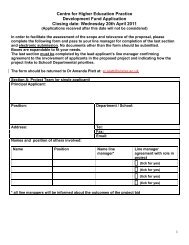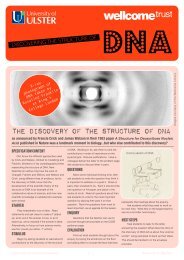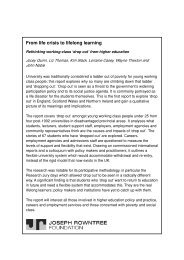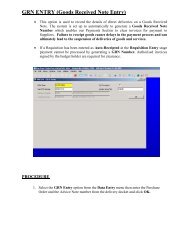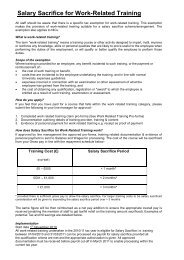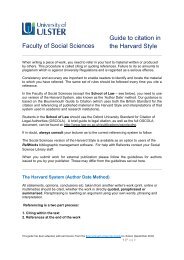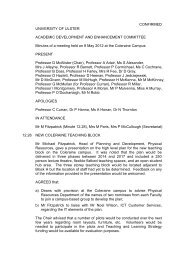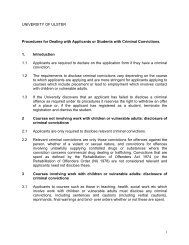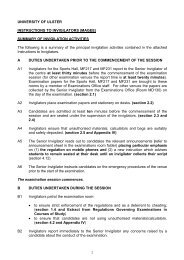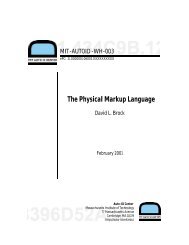ACTION PLAN - University of Ulster
ACTION PLAN - University of Ulster
ACTION PLAN - University of Ulster
Create successful ePaper yourself
Turn your PDF publications into a flip-book with our unique Google optimized e-Paper software.
campus-wide >search and rescue= teams to help identify high-risk students and work with<br />
them before their problems become critical.<br />
The main components <strong>of</strong> the Blackfeet retention model incorporate networking, cultural<br />
activities, counseling, mentoring and teaching various life skills such as stress<br />
management, problem-solving, parenting, and enhanced interpersonal communication.<br />
Jefferson Community College in Kentucky has developed 63 ideas for faculty use in<br />
dealing with retention/attrition. Faculty/Student Interaction include such basic ideas as<br />
faculty learning each student=s name as quickly as possible and using the student=s name<br />
in class; telling students by what name they prefer to be called; at the end <strong>of</strong> each class<br />
period, asking one student to stay for a minute to chat (or compliment, tell you missed<br />
him/her if absent, etc.); and asking students to stop by the faculty person=s <strong>of</strong>fice to pick<br />
up returned quizzes, tests, themes, etc. These provide an opportunity to talk informally<br />
with students, call students when they are absent, make appointments to discuss<br />
attendance, make-up work, etc., get feedback from students about their perceptions about<br />
faculty attitudes toward them, socialize as the faculty person=s style permits, conduct<br />
personal interview with all students sometime during the semester, provide positive<br />
reinforcement when possible, and give respectful answers to any questions they may ask,<br />
listen intently to students= comments and opinions, be aware <strong>of</strong> differences between<br />
students= classroom mistakes and their personal successes/failures, be honest about their<br />
feelings, opinions, and attitudes toward students and toward the subject matter (don=t be<br />
afraid to admit don=t know all answers; if student tells you something in confidence,<br />
respect that confidence; avoid making value judgements about confidences), lend and<br />
borrow some books with students (initiate process with AI=ve just read a great book on<br />
_________@), give your telephone number and <strong>of</strong>fice location to students, at the first class<br />
meeting pair up students and have them get acquainted and switch every five minutes,<br />
and have students establish a buddy system for absences, work missed, assignments,<br />
tutoring (exchange telephone numbers or pair them by majors or geographical proximity).<br />
On the hcc.hawaii.edu website, Culturally Effective Communication is addressed as an<br />
essential skills for all teachers. It is critically important that teachers be culturally<br />
competent communicators, and for them to identify belief systems <strong>of</strong> both the students<br />
and themselves to spot blocks to communication. Areas to be examined need to include:<br />
ethnocentrism (my way is best), discrimination (differential treatment due to minority<br />
status), stereotyping (generalizing about a person while ignoring differences), cultural<br />
blindness (ignore differences and proceed as though they do not exist), and cultural<br />
imposition (belief that everyone should conform to the majority).<br />
What can we do?<br />
While ULM does not have a large American Indian population, a model similar to the<br />
Blackfeet retention model could be used to address the retention <strong>of</strong> African American<br />
students.



